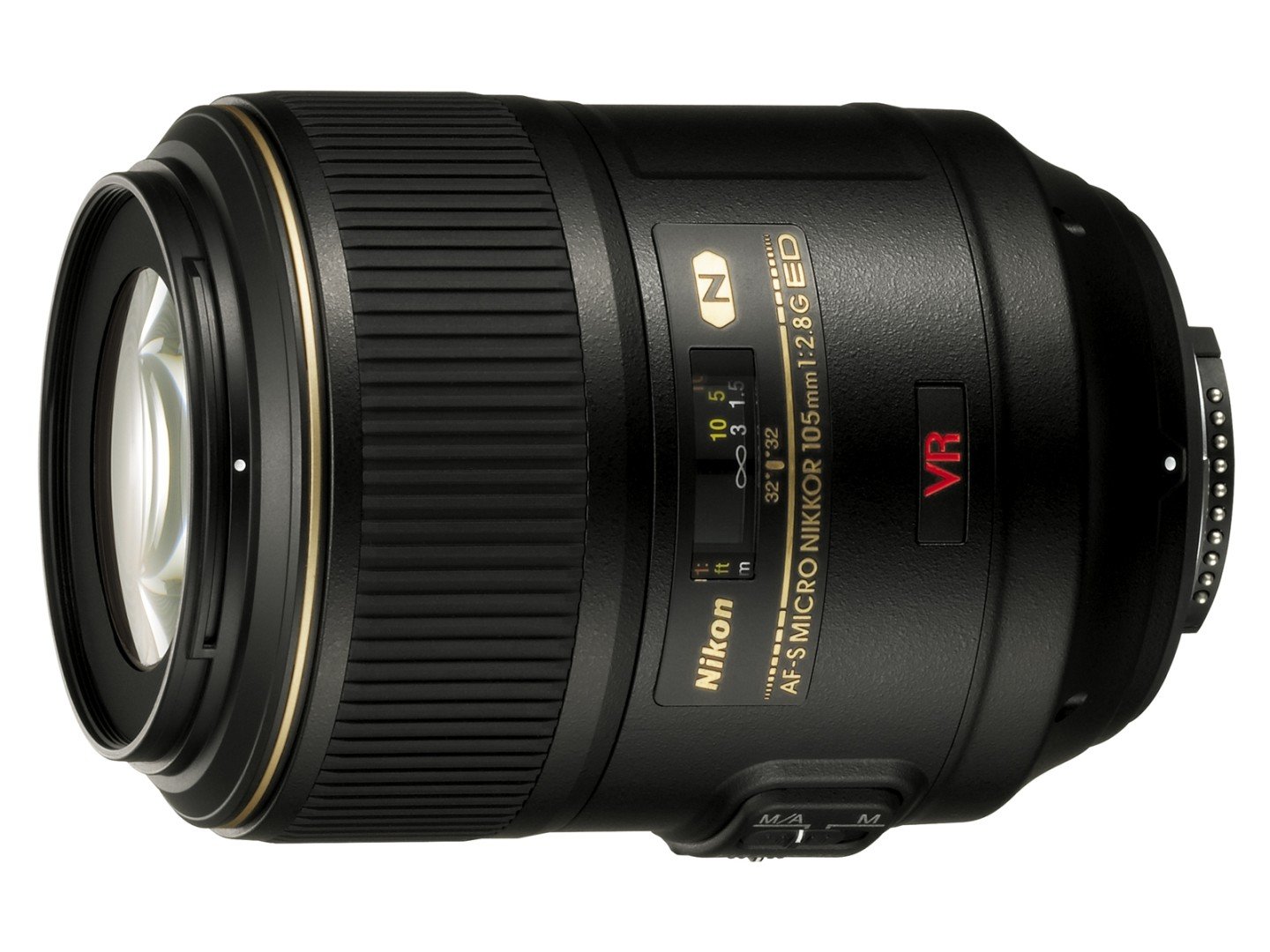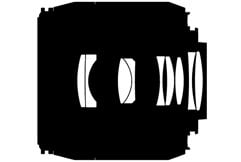Nikon Micro 105mm f2.8G VR review
-
-
Written by Thomas
Intro
The AF-S VR Micro-Nikkor 105mm f/2.8G IF-ED is Nikon’s flagship macro lens. It was the first macro-lens that offered image-stabilization from any brand. It’s compatible with both full-frame FX and cropped-frame DX-format bodies, and as an AF-S model, it’ll also autofocus on any Nikon DSLR.
Available since 2006, the AF-S VR Micro-Nikkor 105mm f/2.8G IF-ED is one of the six macro-lenses that Nikon currently offers. It’s the second longest and second most expensive Micro-Nikkor after the AF Micro-Nikkor 200mm f/4D IF-ED, but as a more modern lens with AF-S focusing and VR, not to mention a brighter aperture and more practical focal length, it’s arguably the best overall macro lens in the range.
On an FX body the 105mm focal length means it’s a mild telephoto lens which can double-up for portrait duties, while on a DX body it enjoys longer reach for smaller or more distant subjects. In this review I’ll take a detailed look at Nikon’s only stabilized macro-lens for FX bodies, and find out whether it delivers decent performance and justifies its price. This is a two-part test, starting with results for cropped-frame DX-format bodies; I’ll update this soon with FX-format results from a brand new D800, and will try and also include comparisons with the Micro-Nikkor 60mm in the future.

Facts from the catalog
Let’s have a look at the technical data. I’ve rated the features with a [+] (or [++]) when it’s better than average or even state of the art, a [0] if it’s standard or just average, and [-] if there’s a disadvantage.
Size and weight: 83x116mm at 750g = quite bulky and long too (19cm including lens-hood); people definitely start looking if you point this lens at them. The weight is also pretty hefty and the lens is certainly not “pocketable” even if you take the pocket of an overcoat. Its smaller cousin, the AF-S DX Micro-Nikkor 85mm f/3.5G ED VR is much lighter and has a more comfortable size but covers only DX sensors. [0]
Optics: 14 elements in 12 groups including one ED-element and nano-coating. So this is the most complex design of current Micro-Nikkors with many glass/air surfaces that tend to produce somewhat lower contrast and increase the risk of flare/glare or ghosts. So the nano-coating is certainly a welcome addition to the formula. Overall the design is pretty similar to the newer AF-S DX Micro-Nikkor 85mm f/3.5G ED VR (which has no nano-coating), and even from the outside both lenses share a similar look. [0]
| Nikon Micro Nikkor cross-section | ||||
 |  |  | ||
DX Micro-Nikkor 40mm f/2.8G | DX Micro-Nikkor 85mm f/3.5G VR | VR Micro-Nikkor 105mm f/2.8G | ||
| The three Micro-Nikkors |
 |
| Form left to right: 40/2.8G, 85/3.5G VR, 105/2.8G VR |
Closest focus distance/max. magnification: 0.31m / 1:1. Magnification of 1:1 is standard with Nikon’s Micro-Nikkors, but other manufacturers call some of their lenses “macro” while only reaching 1:4 magnification. So this is a clear [+] for the Nikkor. But the other important thing with magnification is the working distance from the front lens at 1:1, a figure that is rarely published in the technical data. I measured a working distance from the front of the lens (w/o hood) of 15cm at 1:1. This is in the normal range of such lenses but you still you might find that 15cm is too close for the comfort of many small critters. [0]
Filter-thread: 62mm = same as with the Micro-Nikkor 60/2.8G or 200/4.0D but other than that pretty seldom used on Nikon’s current lenses. This might mean you need to buy extra filters for this lens [0]
Image stabilization: Yes = a real bonus! This lens is the shortest prime lens for FX bodies with stabilization. With VR you can expect to be on the safe side at 1/30 sec or even 1/15 sec with this lens. [+]
Auto focus: AF-S with SWM (silent wave motor) means it’ll work on any Nikon body, while manual-focus override simply involves turning the focus ring. The focus scale has a third line that shows magnification in addition to the shooting distances in m and ft. [+]
Covers FX-sized sensors = This is normal for all macro-lenses of this focal length. [0]
Comes with a flexible lens pouch, snap-on front lens cap, rear lens cap, and revertible bayonet hood, like any standard Nikon lens. [0]
Price: around 730 EUR new (incl. 19% VAT) = definitely not cheap! For this price you can buy the Nikon 60/2.8G macro lens plus a 50/1.8G and get some spare change! [0]
Distance information is relayed to the camera, so the Nikon body can do all the advanced exposure-related stuff with this lens. But this is true for all the alternatives too. [0]
Aperture ring = no, just like all Nikon G-lenses. [0]
Sealing: yes! There’s a rubber grommet on the lens-mount. [+]
Focus limiter switch: Yes. So AF has not always to consider the whole range of possible subject distances. This could prevent hunting under certain conditions. [+]
This gives a total score of 0[-] / 9[0] / 5[+] in the “features-department”. That shows that the lens ticks many boxes feature-wise and has no real technical draw-backs. But it has its high price and certainly brings some size and weight to the table, too.
Motivation
:
105mm was long considered a standard in macro-lenses (it’s already Nikon’s 10th iteration) as it gives you some reasonable working-distance. It lets you get close to your subject and shows details other lenses can’t show. It also doubles up as a moderate tele-lens. Plus there are expectations that macro-lenses are pretty sharp. But as always: what you expect and what you actually get may not coincide. So you’ll have to wait a little until all is revealed.
Alternatives
:
If you want a stabilized macro-lens there are really only three alternatives:
– The Nikon AF-S DX Micro-Nikkor 85mm f/3.5G ED VR: Shorter, cheaper, but only for DX bodies.
– The Sigma AF 105mm 2.8 EX DG OS HSM Macro: Comparable.
– The Sigma AF 150mm 2.8 EX DG APO HSM OS: Longer and more expensive.
If you’re willing to forego image stabilization there are many more alternative lenses to choose from Nikon, Sigma, Tamron and Tokina.
 The AF-S VR Micro-Nikkor 105mm f/2.8G IF-ED is a very good lens with professional build. The VR image-stabilization works well even at larger magnifications and it comes at an appropriate price for this degree of performance. This earns it a Highly recommended, although if you’re a confirmed DX-owner who doesn’t need full-frame compatibility, you can save quite a bit by going for the 85mm Micro Nikkor without sacrificing any significant performance.
The AF-S VR Micro-Nikkor 105mm f/2.8G IF-ED is a very good lens with professional build. The VR image-stabilization works well even at larger magnifications and it comes at an appropriate price for this degree of performance. This earns it a Highly recommended, although if you’re a confirmed DX-owner who doesn’t need full-frame compatibility, you can save quite a bit by going for the 85mm Micro Nikkor without sacrificing any significant performance.



